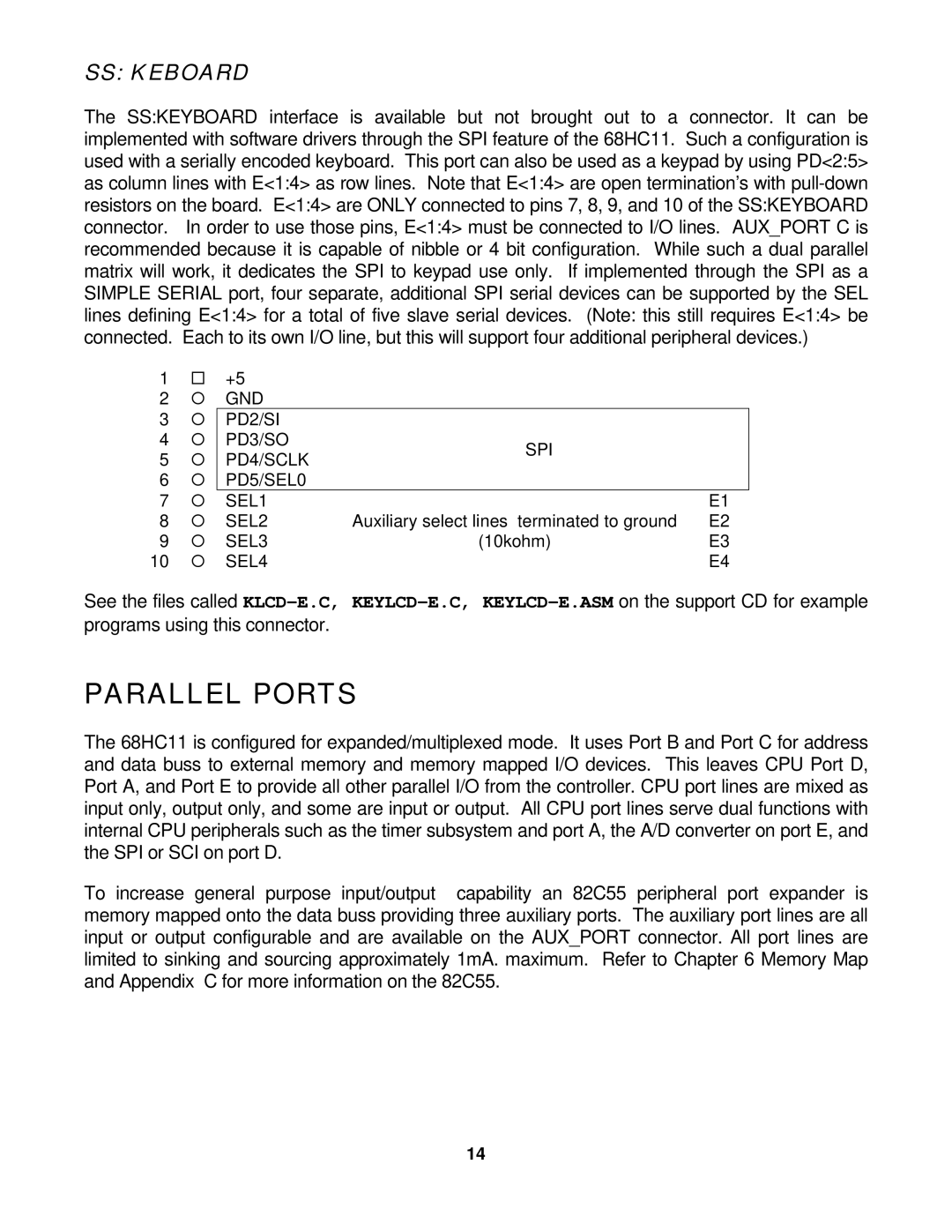SS: KEBOARD
The SS:KEYBOARD interface is available but not brought out to a connector. It can be implemented with software drivers through the SPI feature of the 68HC11. Such a configuration is used with a serially encoded keyboard. This port can also be used as a keypad by using PD<2:5> as column lines with E<1:4> as row lines. Note that E<1:4> are open termination’s with
1 | ¨ | +5 |
|
|
2 | ¡ | GND |
|
|
3 | ¡ | PD2/SI |
|
|
4 | ¡ | PD3/SO | SPI |
|
5 | ¡ | PD4/SCLK |
| |
|
| |||
6 | ¡ | PD5/SEL0 |
|
|
7 | ¡ | SEL1 |
| E1 |
8 | ¡ | SEL2 | Auxiliary select lines terminated to ground | E2 |
9 | ¡ | SEL3 | (10kohm) | E3 |
10 | ¡ | SEL4 |
| E4 |
See the files called
PARALLEL PORTS
The 68HC11 is configured for expanded/multiplexed mode. It uses Port B and Port C for address and data buss to external memory and memory mapped I/O devices. This leaves CPU Port D, Port A, and Port E to provide all other parallel I/O from the controller. CPU port lines are mixed as input only, output only, and some are input or output. All CPU port lines serve dual functions with internal CPU peripherals such as the timer subsystem and port A, the A/D converter on port E, and the SPI or SCI on port D.
To increase general purpose input/output capability an 82C55 peripheral port expander is memory mapped onto the data buss providing three auxiliary ports. The auxiliary port lines are all input or output configurable and are available on the AUX_PORT connector. All port lines are limited to sinking and sourcing approximately 1mA. maximum. Refer to Chapter 6 Memory Map and Appendix C for more information on the 82C55.
14
